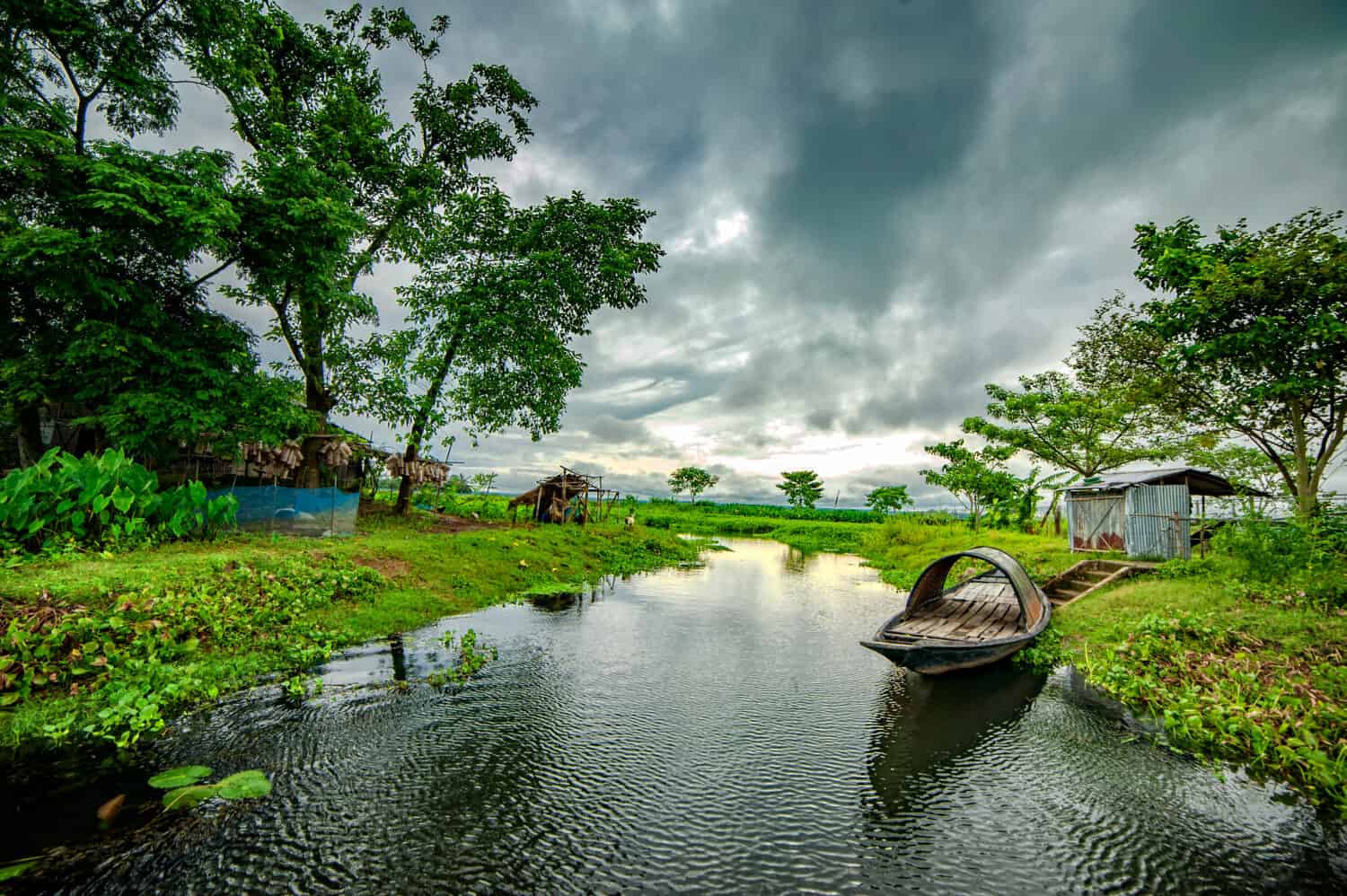Flooding is a natural disaster that affects millions of people worldwide, causing widespread devastation and displacement. While floods can occur almost anywhere, certain countries are more prone to this environmental threat. This is due to their geographic location, climate, and rainfall patterns. In this article, we will explore the 10 most flood-prone countries on Earth, delving into their unique characteristics, general weather patterns, population, and specific flooding information.
1. Bangladesh
Bangladesh, nestled in the heart of South Asia, is renowned for its stunning delta landscapes and lush river systems. However, it is also one of the most flood-prone countries in the world. The unique geographical features of Bangladesh, notably its low-lying topography and extensive river network, make it particularly vulnerable to flooding. Every year, during the monsoon season, from June to October, the country experiences heavy rainfall. This can lead to the overflow of the Ganges, Brahmaputra, and Meghna rivers and the inundation of vast regions. The annual monsoons and the melting of Himalayan glaciers elevate river levels. In turn, this results in devastating flooding that affects millions of people and disrupts the country’s agriculture, infrastructure, and daily life.
Bangladesh’s population, which exceeds 160 million, is densely concentrated in urban areas and agricultural regions adjacent to rivers and deltas. The rapid urbanization and inadequate infrastructure in major cities, including the capital, Dhaka, exacerbate the impact of flooding. Despite these challenges, the people of Bangladesh have shown remarkable resilience in adapting to the recurring flood events. The country has implemented various measures. Among these, we can count on the construction of embankments and flood shelters, as well as improved forecasting and early warning systems, to mitigate the devastating consequences of flooding. However, the ongoing threat of climate change, sea-level rise, and increasingly erratic weather patterns pose significant challenges. Ultimately, these factors make Bangladesh’s battle against flooding a complex and ongoing struggle.
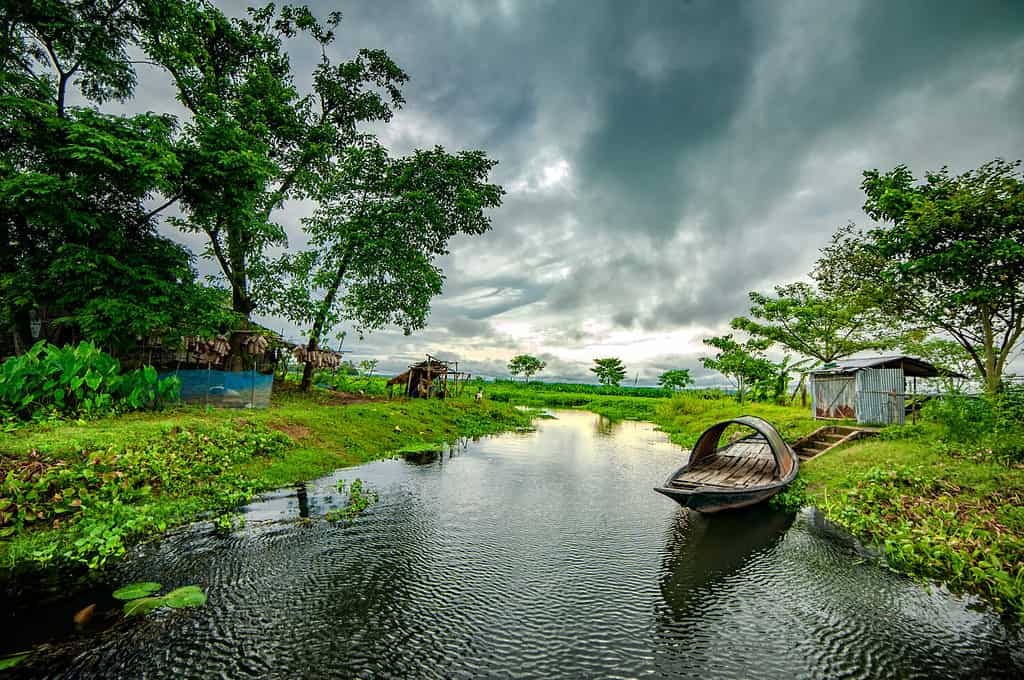
Every year, during the monsoon season, from June to October, Bangladesh experiences heavy rainfall.
©Chobi_Wala/Shutterstock.com
2. India
India, a country of incredible diversity and geographic expanse, faces extensive flooding issues, making it one of the world’s most flood-prone nations. The Indian subcontinent experiences two distinct monsoons: the southwest monsoon from June to September, followed by the northeast monsoon from October to December. These monsoons bring heavy rainfall to various parts of the country. This results in extensive river flooding, particularly in states like Assam, Bihar, and Uttar Pradesh. The Ganges, Brahmaputra, and other major rivers often overflow their banks, causing widespread devastation and affecting millions of people. Coastal areas, such as those along the Bay of Bengal, are also prone to cyclones and storm surges that can lead to severe flooding, further increasing the country’s vulnerability to this natural disaster.
The densely populated urban areas in India, including megacities like Mumbai and Kolkata, are particularly vulnerable to flooding due to poor drainage infrastructure, rapid urbanization, and encroachments on floodplains. India’s challenging topography, from the high-altitude Himalayan region to the coastal plains, further adds to the complexity of flood management. The country has made significant efforts to improve flood forecasting, early warning systems, and the construction of embankments and reservoirs to mitigate the impact of floods. Nonetheless, India’s diverse and dynamic climatic conditions continue to pose significant flood risks. This emphasizes the need for ongoing strategies to cope with this recurrent natural disaster.
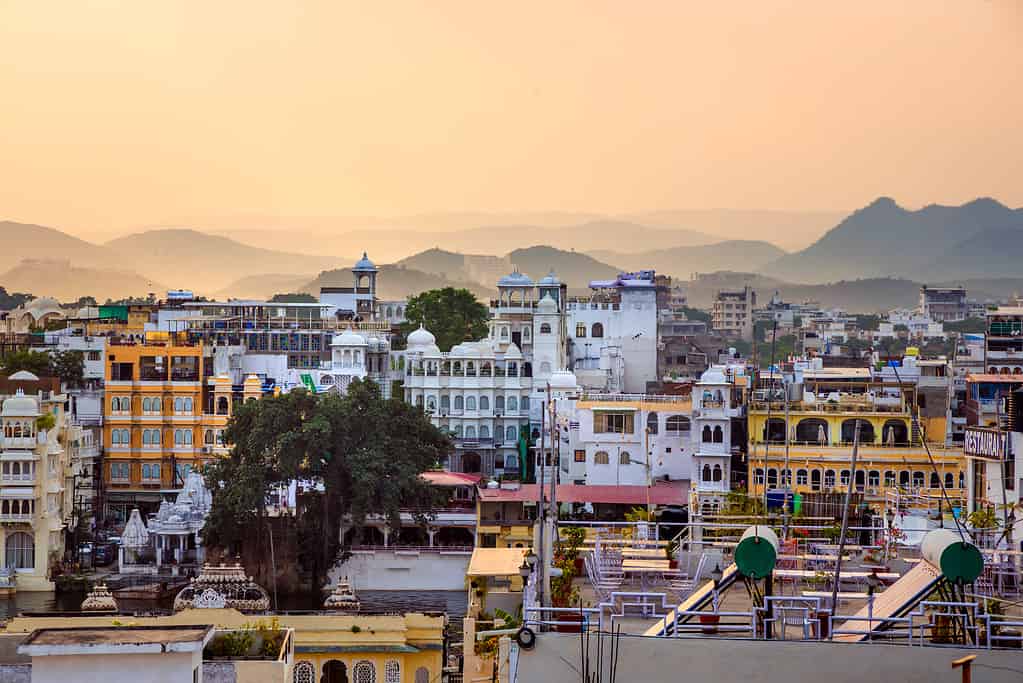
India’s challenging topography, from the high-altitude Himalayan region to the coastal plains, adds to the complexity of flood management.
©cookelma/iStock via Getty Images
3. Vietnam
Vietnam, situated in Southeast Asia, is one of the most flood-prone countries in the world, owing to its susceptibility to its coastal geography and tropical monsoon climate. The country experiences two primary seasons: a wet season from May to October and a dry season from November to April. During the wet season, Vietnam endures heavy and sustained rainfall. This happens particularly in the northern and central regions, which can lead to riverine and flash floods. These flooding events pose significant challenges to both urban and rural areas, affecting agriculture, infrastructure, and the livelihoods of millions of people.
The Mekong Delta, often referred to as the “Rice Bowl” of Vietnam, is particularly vulnerable to flooding. This is mainly due to its low-lying topography and proximity to the Mekong River. Cyclones, which frequently strike the central coastal areas, can also trigger severe flooding and inundation. Vietnam’s population is heavily concentrated along the coastal and low-lying regions. This makes people particularly susceptible to substantial challenges in managing and adapting to these annual flood events. While the government has made considerable efforts to enhance flood forecasting and response measures, addressing the long-term impact of climate change and sea-level rise remains a formidable challenge for the nation.
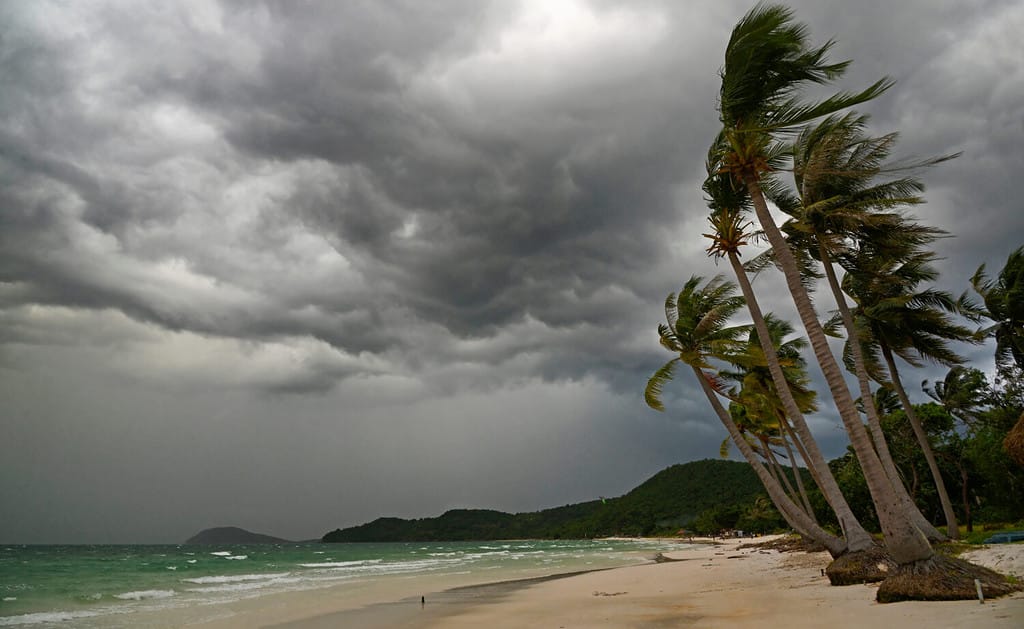
During the wet season, Vietnam endures heavy and sustained rainfall, particularly in the northern and central regions.
©vivanvu/Shutterstock.com
4. Indonesia
Indonesia, an archipelagic nation comprising over 17,000 islands, is highly susceptible to various forms of flooding due to its unique geographic makeup and tropical climate. The country’s location along the Pacific Ring of Fire exposes it to volcanic eruptions, earthquakes, and tsunamis. All of these can exacerbate flooding events. Indonesia experiences a distinct wet season from November to March, characterized by heavy rainfall. This is the case, particularly in regions like Sumatra and Kalimantan, where monsoons bring river flooding and landslides. The sheer diversity of ecosystems, from dense rainforests to low-lying coastal areas, makes Indonesia particularly vulnerable to a wide range of flood risks.
Urban areas, including the capital city of Jakarta, are also at risk of both river and tidal flooding. The combination of rapid urbanization, inadequate drainage systems, and land subsidence compounds the flood risk in many cities across the country. Indonesia has invested in flood management strategies, including the construction of flood defenses, early warning systems, and disaster response mechanisms. However, the nation continues to grapple with the challenge of managing these multifaceted flood risks while addressing the long-term implications of climate change and sea-level rise.
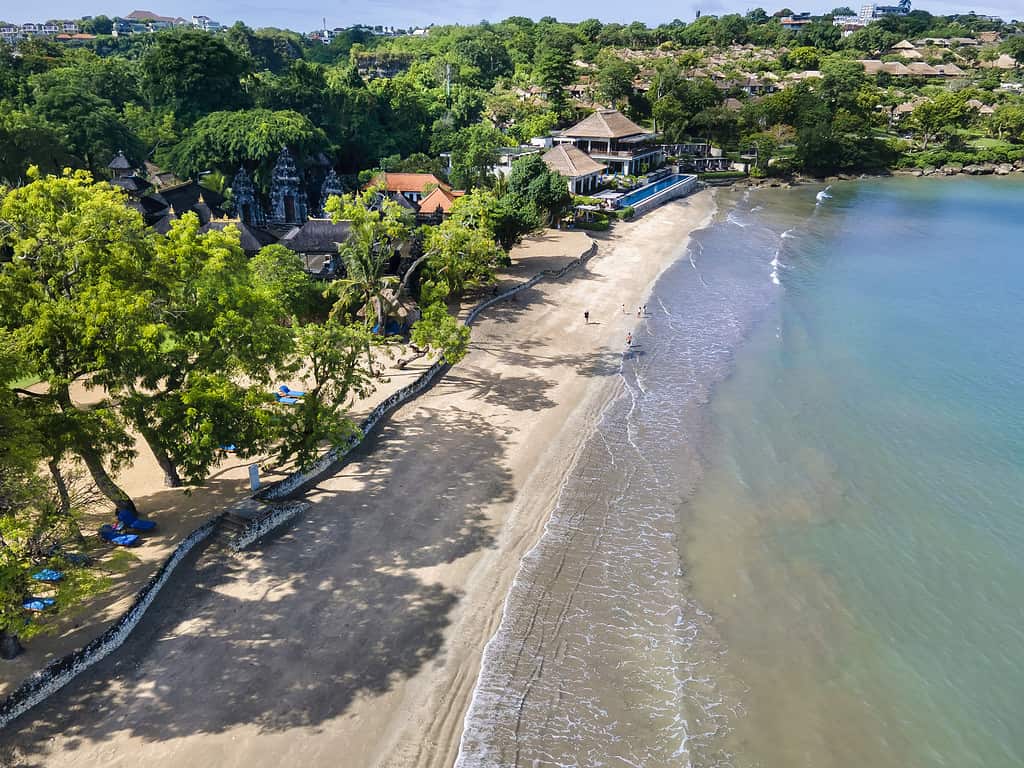
The country’s location along the Pacific Ring of Fire exposes it to volcanic eruptions, earthquakes, and tsunamis, all of which can exacerbate flooding events.
©trubavin/iStock via Getty Images
5. China
China, with its vast and varied geography, experiences a wide range of flood risks, making it one of the world’s most flood-prone countries. Monsoonal rains, primarily during the summer months, bring heavy precipitation to many regions, leading to extensive river flooding. The Yangtze River, the longest river in Asia, is particularly susceptible to flooding. Furthermore, it has a long history of devastating inundations, affecting millions of people. Besides the Yangtze, other major rivers like the Yellow River and the Pearl River also pose significant flood risks. Seasonal monsoons lead to frequent overflow and inundation of low-lying areas. China’s rapid urbanization and the development of infrastructure along these riverbanks add complexity to the management of flood risk in densely populated areas.
In recent years, China has invested heavily in flood control measures. These include the construction of large dams and reservoirs, such as the Three Gorges Dam on the Yangtze River, which serves as both a hydroelectric facility and a flood control structure. Additionally, the country has developed sophisticated early warning systems to monitor weather patterns and river levels. This allows for more timely responses to flood events. Despite these efforts, China remains susceptible to flood disasters. Climate change, urbanization, and deforestation exacerbate flood risks and make long-term flood management a continuous challenge.
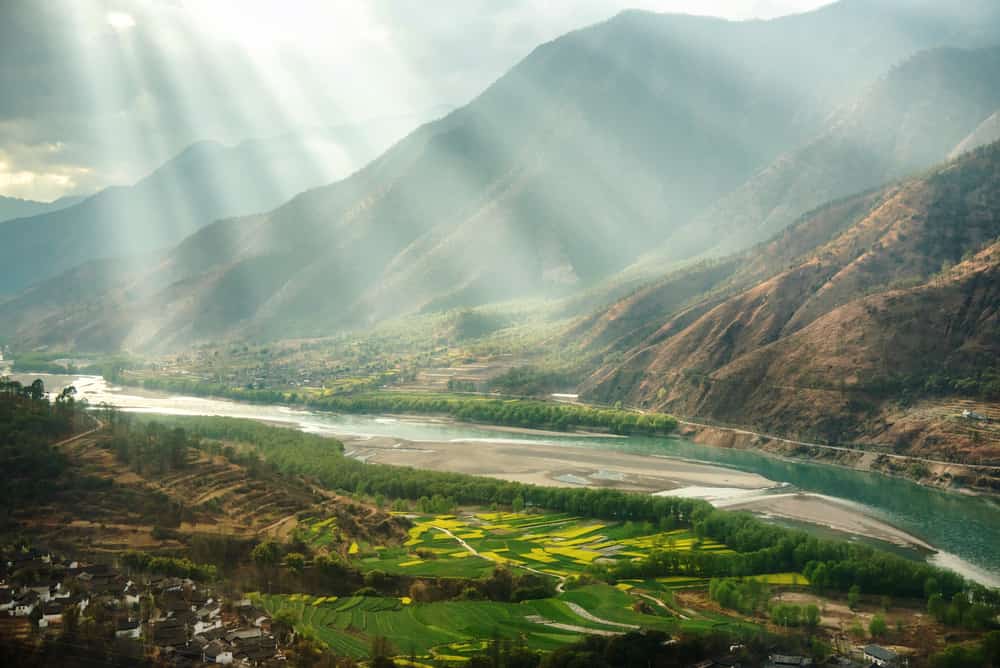
The Yangtze River, the longest river in Asia, has a long history of devastating inundations.
©martinho Smart/Shutterstock.com
6. Nepal
Nepal, a landlocked country nestled in the Himalayas, faces a considerable risk of flooding, primarily during the monsoon season. The rugged terrain and numerous river systems make Nepal susceptible to flash floods and landslides. These, in turn, can have devastating consequences for local communities and agriculture. The monsoon rains, typically from June to September, bring heavy precipitation to the region. This, in turn, leads to elevated river levels, erosion, and frequent landslides. The steep slopes and fragile hillside ecosystems further compound the flood risk. This makes remote and mountainous areas particularly vulnerable to these natural disasters.
The densely populated urban areas and agricultural regions along riverbanks and valleys are at the highest risk of flooding. In these areas, river inundations and landslides can result in significant damage to infrastructure and agriculture as well as displacement of communities. Nepal has made efforts to improve flood management. This includes the construction of embankments and reservoirs, as well as early warning systems to mitigate the impact of floods. However, the challenges posed by the country’s challenging topography and rapidly changing weather patterns necessitate ongoing strategies to cope with this recurring threat.

The monsoon rains, typically from June to September, bring heavy precipitation to Nepal.
©Chendongshan/Shutterstock.com
7. Pakistan
Pakistan, located in South Asia, grapples with recurring flood events, making it one of the most flood-prone countries in the world. Monsoonal rains, particularly during the summer months from July to September, bring heavy rainfall to the region, leading to extensive river flooding. The Indus River, one of Pakistan‘s major river systems, frequently experiences severe flooding. Millions of people are displaced when this happens, and infrastructure and agriculture experience widespread damage. The melting of Himalayan glaciers, compounded by erratic weather patterns, has led to more frequent and intense flooding in recent years. Pakistan’s diverse geography, ranging from high mountains in the north to fertile plains in the south, makes it especially vulnerable to various types of flooding.
Urbanization, deforestation, and inadequate infrastructure, particularly in major cities such as Karachi, have added to the flood risk in densely populated areas. The country has invested in flood management strategies. These include the construction of embankments and reservoirs and the enhancement of early warning systems. However, addressing the long-term impact of climate change and glacial melt, as well as the potential for increased flood risks, remains a significant challenge. Pakistan continues to grapple with the complex task of managing these multifaceted flood threats to protect its population and ensure disaster resilience.
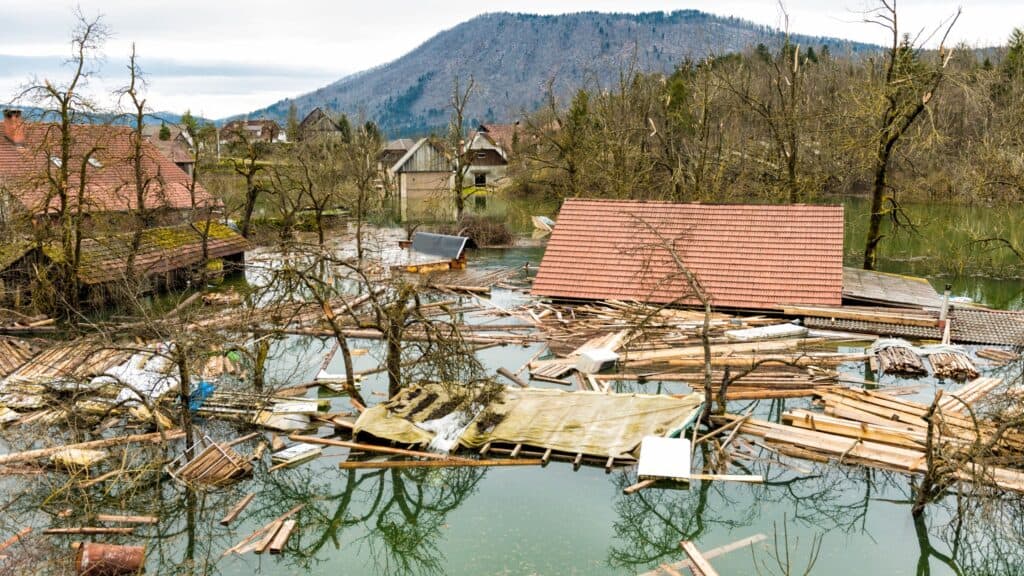
The Indus River, one of Pakistan’s major river systems, frequently experiences severe flooding.
©Saigh Anees/Shutterstock.com
8. Mozambique
Mozambique, located on the southeastern coast of Africa, is highly susceptible to flooding, particularly along the Zambezi River and in low-lying coastal areas. The country experiences two distinct seasons: a wet season from November to April, characterized by heavy rainfall, and a dry season from May to October. During the wet season, the intense rainfall leads to riverine and flash floods. The Zambezi River, one of the country’s major river systems, is prone to overflowing its banks. When this happens, it inundates vast regions and causes widespread damage to infrastructure and agriculture. Coastal areas along the Indian Ocean are also vulnerable to cyclones and storm surges. This can result in severe flooding and significant damage to coastal communities and ecosystems.
Urban areas, such as the capital city of Maputo, face increasing flood risks due to rapid urbanization and inadequate drainage infrastructure. Mozambique‘s population, with a substantial percentage residing along the coast and in low-lying areas, is exposed to significant challenges in managing and adapting to these annual flood events. The government, along with international organizations, has taken steps to improve flood forecasting and response mechanisms. Still, Mozambique remains susceptible to the impact of climate change and sea-level rise. It is essential to implement ongoing strategies to cope with these recurrent flood events while addressing the long-term implications of environmental changes.

Urban areas, such as the capital city of Maputo, face increasing flood risks due to rapid urbanization.
©Sopotnicki/Shutterstock.com
9. Philippines
The Philippines, an archipelago comprising over 7,000 islands, is one of the world’s most flood-prone countries due to its coastal location and tropical climate. The country’s geography exposes it to a wide range of natural hazards, including typhoons, heavy rainfall, and frequent flooding. The Philippines experiences two distinct monsoon seasons: the southwest monsoon, which brings heavy rains from May to October, and the northeast monsoon from November to April. During these seasons, typhoons and tropical storms often pass through the region, resulting in heavy rainfall, river flooding, and landslides. With a high population density in many coastal and urban areas, the Philippines is particularly vulnerable to the devastating impact of these extreme weather events.
The country has also struggled with rapid urbanization, inadequate drainage systems, and informal settlements in flood-prone areas. All these further compound the flood risk in urban centers like Manila. Despite the government’s efforts to enhance flood management, including early warning systems, disaster preparedness, and infrastructure development, the Philippines faces formidable challenges in coping with frequent flood events. Climate change and the increasing frequency of extreme weather conditions have amplified the country’s vulnerability to flooding. These factors are an ongoing concern for the Philippines and its population.
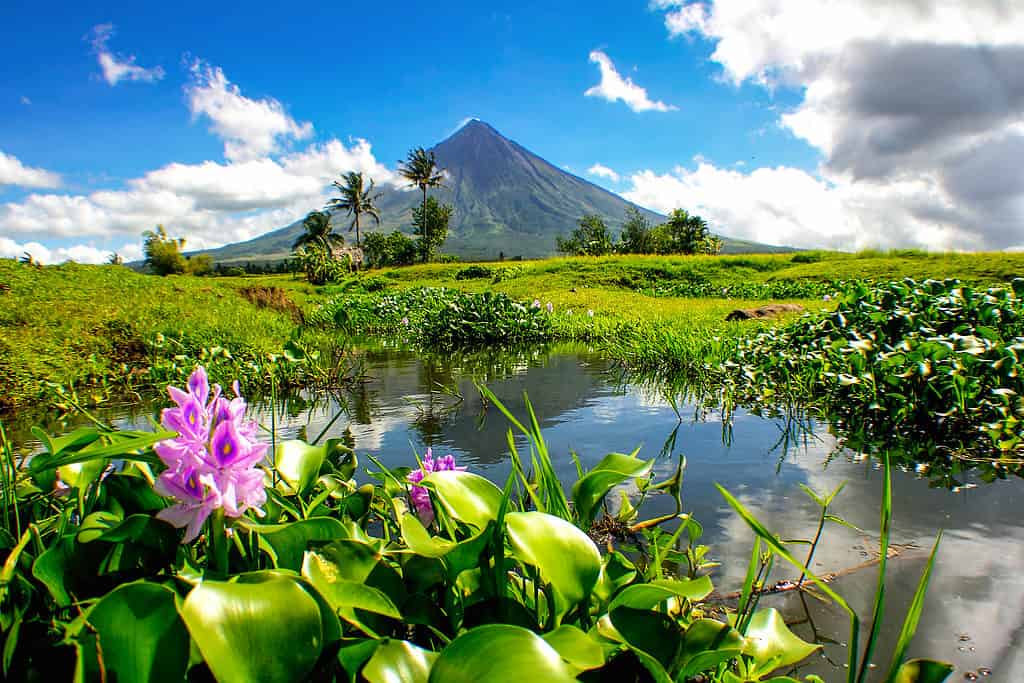
Despite the government’s efforts to enhance flood management, the Philippines continues to face challenges in coping with frequent flood events.
©cristan pago74/Shutterstock.com
10. Nigeria
Nigeria, the most populous country in Africa, contends with recurring flood events, positioning it as one of the continent’s most flood-prone nations. The West African monsoon, which typically occurs from June to September, is characterized by heavy rainfall that can lead to extensive river flooding. Nigeria’s major rivers, including the Niger and Benue, often overflow their banks. This, in turn, affects millions of people and causes significant damage to infrastructure and agriculture. Poor urban planning, inadequate drainage infrastructure, and rapid population growth have heightened the risk of urban flooding, especially in cities like Lagos and Port Harcourt.
Nigeria‘s geography, which ranges from coastal regions to inland areas, exposes it to a wide array of flood risks. Coastal areas along the Gulf of Guinea are prone to tidal flooding and storm surges. This is the case, particularly during the rainy season and tropical storms. The government has implemented measures to mitigate flood risks. This includes the construction of dams and reservoirs, flood defenses, and early warning systems. Nevertheless, addressing the long-term impact of climate change and the potential for increased flood risks remains a considerable challenge for Nigeria, underscoring the need for continuous strategies and disaster preparedness to protect its population and ensure resilience in the face of recurrent flood events.

Nigeria’s geography, which ranges from coastal regions to inland areas, exposes it to a wide array of flood risks.
©iStock.com/Kehinde Temitope Odutayo
Conclusion
Floods are recurring and destructive natural disasters that affect countries across the globe. The 10 countries mentioned in this listicle are particularly prone to flooding due to their geographic location, climate, and weather patterns. While efforts are being made to mitigate flood risks, understanding the challenges and vulnerabilities of these nations is essential for disaster preparedness and response. This ultimately helps to protect the lives and livelihoods of their populations.
| Rank | Country |
| #1 | Bangladesh |
| #2 | India |
| #3 | Vietnam |
| #4 | Indonesia |
| #5 | China |
| #6 | Nepal |
| #7 | Pakistan |
| #8 | Mozambique |
| #9 | Philippines |
| #10 | Nigeria |
Thank you for reading! Have some feedback for us? Contact the AZ Animals editorial team.

